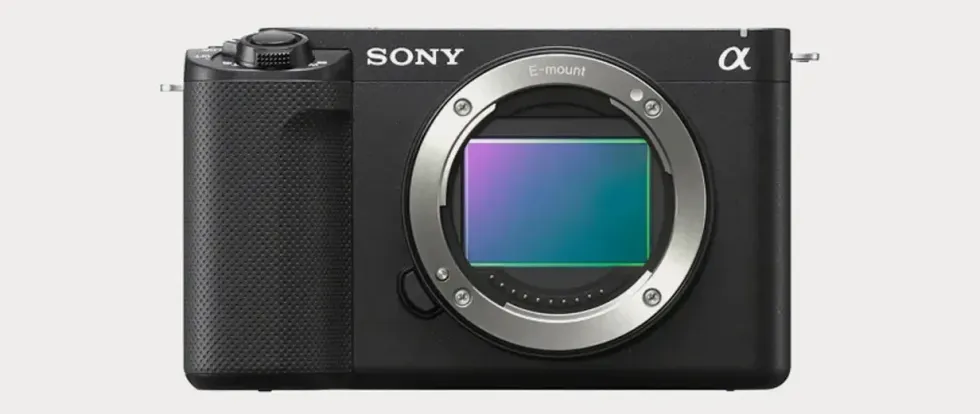
Like Icarus flying too close to the sun, no camera manufacturer is immune to the hubris of pushing for the highest video recording specs which they can muster.
And just like Canon and other manufacturers have in the past, Sony has released a new firmware update for their popular ZV-E1 which truly pushes the boundaries of what is possible for their affordable, light, and very compact mirrorless camera. Just like the cameras which came before it, users are learning that when you push the limits of a camera (basically over-cranking the thing), you will find issues with overheating in different environments and with different uses.

Just like the cameras which came before it, users are learning that when you push the limits of a camera (basically over-cranking the thing), you will find issues with overheating in different environments and with different uses.
Let’s take a look at this new firmware update for the Sony ZV-E1, explore what’s going on under the hood, and see if we can review some tests of just how much overheating might (or might not be) an issue when pushing the continuous shooting limits of the ZV-E1.
The Sony ZV-E1
Designed as a truly professional photo and video for today’s modern hybrid content creators, the Sony ZV-E1 has been a hot commodity from the jump thanks to Sony’s brand reputation for sharp, crisp, and great colors along with a perfectly capable video recording machine packed into a lightweight and relatively small mirrorless body.
With a 12MP Full-Frame CMOS sensor, the ZV-E1 was no slouch either even before the firmware upgrade really got it going. It has great stabilizations, a robust 15+ stops of dynamic range, and even some new and nifty AI-auto-framing features, along with all the usual bells and whistles you’d expect for a quai-flagship mirrorless camera from a legacy brand like Sony.
The best part to many might be its price point at just above $2,000, which is quite competitive against its similar-spec-ed competition which can push into the $3,000 and $4,000 range. Here are the current, full specs for the ZV-E1:
- Designed for Content Creators
- 12MP Full-Frame Exmor R CMOS Sensor
- UHD 4K 120p / FHD 240p / 10-Bit 4:2:2
- 5-Axis SteadyShot Image Stabilization
- 15+ Stops Dynamic Range, AI Auto-Framing
- Multi-Face Recognition, Time-Lapse
- Product Showcase Setting
- S-Log3, S-Gamut3, S-Cinetone, User LUTs
- Extended ISO 80-409,600
- Internal Mic + Inputs, USB Streaming
Price: $2,198.00
Adding 4K Video at 120p
Now, as we covered at the time, adding 4K 120p to the Sony ZV-E1 is a game changer for content creators. Not only does this crank up the camera’s regular video recording capabilities, but it also really unlocks some of the highest grade high frame rate recording which you’ll see anywhere near this price point.
As mentioned in the video on the overheating issue below, there was speculation of Sony putting this update behind a paywall since it is so valuable to so many creators. But, to their credit—and perhaps in anticipation of any issues—Sony chose to release this update for free.
Now the question becomes, just how much continuous shooting at these new high recording rates can this little guy actually handle? If there are any, can these potential overheating issues be harmful to you or your camera?
How Hot is Too Hot?
While we don’t have our hands on a Sony ZV-E1 to test ourselves right now, luckily there are plenty of online videographers and reviewers like Mark Bennett’s Camera Crisis to share their tests and results. According to our host above, the Sony ZV-E1 running at max recording specs actually performed a bit better than expected, but certainly not without issues of getting hotter in different environments and needing to shut off.
From the video, we saw that when recording 4K 120p at 10-bit 4:2:2 (280 Mb/s) in a controlled indoor environment of 72ºF (22ºC) the camera was able to shoot for about 26 minutes straight. Which is a pretty solid record time for any digital mirrorless at that clip.
However, when pushed to a higher indoor temperature of 77ºF (25ºC), the ZV-E1 was only able to record for 13 minutes straight. And when tested outside at a similar temp, it only lasted about 10 minutes.
As you can see, a trend begins to emerge where continuous shooting is going to be a problem when in warmer environments. Which certainly signals that overheating is an issue. However, as explained in the video, this isn’t anything completely exclusive to the ZV-E1.
So, if you are interested in purchasing the ZV-E1 specifically for continuous recording at this new highest clip and in hotter environments, you might want to look elsewhere for a higher-end camera that might be more durable for these temps.
However, if you’re not planning to shoot for too long or more exclusively in controlled environments, you should be just fine.
How do you feel about these potential overheating issues with the ZV-E1? Let us know your thoughts in the comments below.
Author: Jourdan Aldredge
This article comes from No Film School and can be read on the original site.
